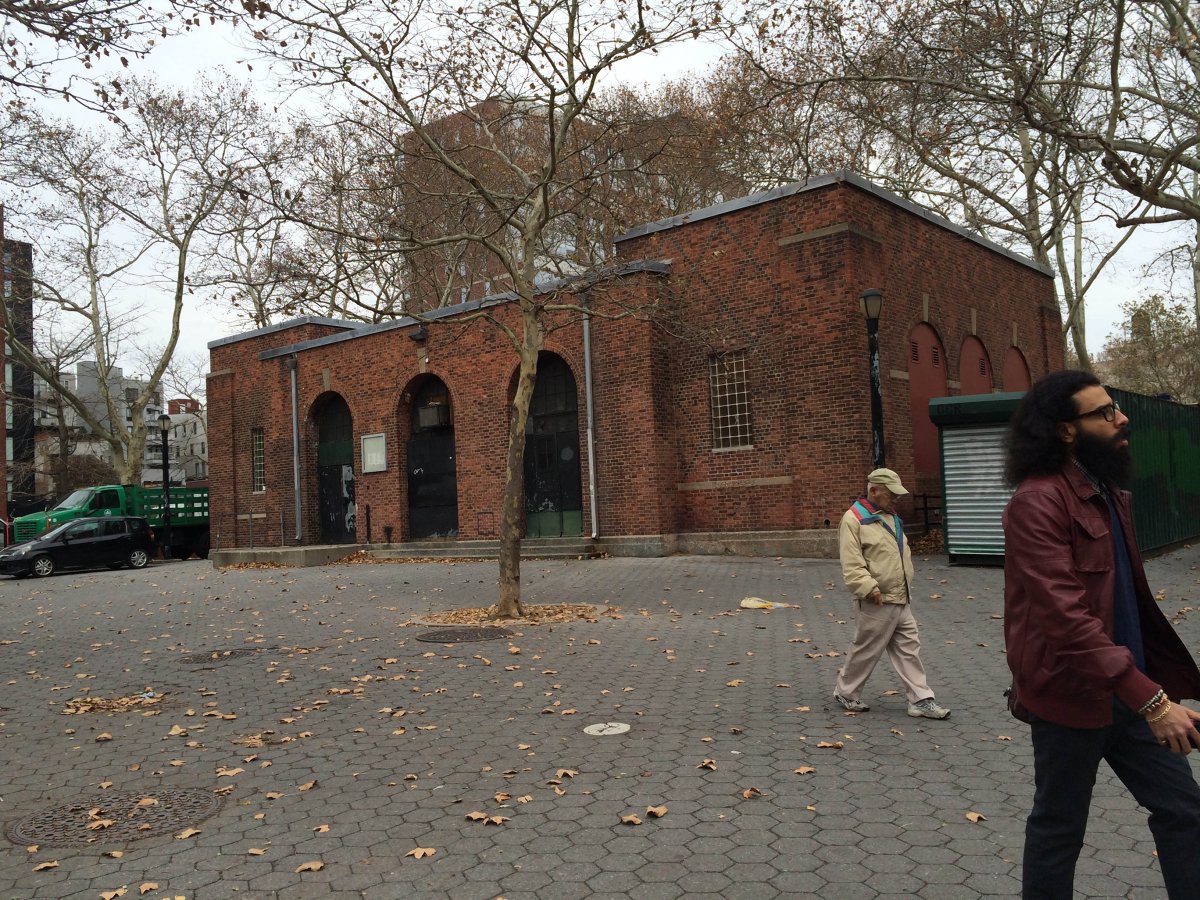
BY MICHAEL OSSORGUINE | The NYCommons coalition aims to reclaim public lands in the East Village and Lower East Side that they say are currently contributing nothing to the community, and convert them for nonprofit use. In an event last Wednesday dubbed, Land! Money! Power!, the coalition enlisted activists of all ages for an educational workshop meant to give them tools on just how to do that.
The gathering, at the BRC Senior Center, at Delancey St. in Sara D. Roosevelt Park, was the last of three targeting the Stanton building, a Parks Department storage warehouse a bit farther north in the park with a history of being a rec center.
Among the community’s many suggestions for the space are a bike-repair station or a solar installation. Yet the NYCommons coalition is still undecided on which idea to concentrate their efforts. To gage which are the most popular options, more than 100 people filled out surveys on July 6. The July 27 workshop focused on lobbying methods and funding.
“We’re going to be learning about structures and strategies to advocate for parks on the Lower East Side that face the forces of privatization and gentrification,” an NYCommons speaker explained.
Starting with a presentation on the “Land!” aspect of Land! Money! Power, Paula Segal from 596 Acres related how 600 public gardens were designated in 1999, after advocates sued to block the auctioning of community gardens to private developers by Mayor Rudy Giuliani.
“There were about 1,400 gardens, and the city owned about 20,000 vacant lots,” Segal said. “Instead of auctioning the 18,600 truly vacant lots, Giuliani decided he would auction just the community gardens. He thought the gardens were terrible for neighborhoods because they were places where people got to know each other and started organizing. So the gardeners organized, and they filed a lawsuit, and the settlement of that lawsuit ended up creating around 600 protected community gardens.”
Segal also stressed that numerous Parks buildings that were built as public spaces closed in the 1980s, along with the Stanton building, and that reopening them is a lengthy process.
Giving an example of how clever bargaining with the city can pan out, Christine Datz-Romero, executive director of the Lower East Side Ecology Center, explained how her group got a Parks building in East River Park for use as a composting site. They pay no rent but provide volunteer resources to Parks in return for use of the space.
Next on the agenda was “Money!” Coalition members described how to secure city funding for local nonprofit initiatives: Proposals need to earn supportive resolutions from the local community board; meetings must be held with local politicians.
Leah Worrel, leadership development manager for the Partnership for Parks, described community envisioning, which she called a crucial part of fundraising.
“What ‘community envisioning’ is, basically, is if you are a community group, like the Sara D. Roosevelt Park Coalition, how do you find out what the whole community wants?” Worrel said. “It’s a way to actually gather input from the community to find out, if you are going to renovate the park, what do you want to see?”
Copies of the Community Board 3 budget cycle and fiscal year 2016 budget priorities were handed out. Similar “public envisioning” meetings are held year-round at the board’s discretion. However, September was highlighted as the month when C.B. 3’s annual priorities for capital expenditures are voted on.
“It’s really important for the community to decide priorities for spending money,” Susan Stetzer, C.B. 3 district manager, said.
Stetzer explained how the community board, whose resolutions are only advisory, is the public’s voice in the budgeting process, and has often successfully lobbied for capital funds to be allocated to high-priority projects.
“There’s a limited amount of money. It’s not just that everything is going to be funded,” Stetzer explained. “There’s a pot of money, and it’s a very fierce competition. But there’s a charter mandate for public participation in the budgeting cycle.”
Stetzer noted that efforts to renovate a park next to P.S. 188, at E. Houston St. near Avenue D, ended successfully because parents came to public hearings and informed the board that the space was dilapidated. After the item garnered a No. 1 spot on the C.B. 3 2005 budget priority list, and got support from the Parks Department, Councilmember Rosie Mendez was able to fund the renovations in 2006.
“It’s a playground now, and it’s amazing. It’s the most beautiful playground in the state,” Stetzer said. “And that’s how City Council works with the community board.”
During the meeting’s “Power!” portion, NYCommons discussed the 10 buildings scattered around the Lower East Side that the group says are underutilized. These include the Baruch Houses bathhouse a.k.a. “The White House,” the Allen St. Mall comfort station, the Hester St. building and of course the Stanton building.
Over the next few weeks, the S.D.R. Park Task Force will compile the survey results for the Stanton building and distill them into a clearer picture of the community’s preferences.
Borough President Gale Brewer and Councilmember Margaret Chin recently allocated $1 million to renovate the Stanton park building’s bathrooms. But Kathleen Webster, the S.D.R. Coalition director, warned that Parks might need closer to $2.5 million.

















